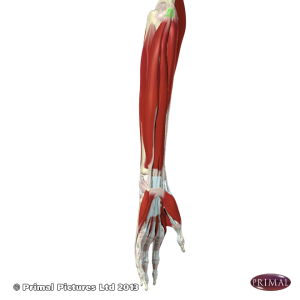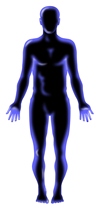Medial epicondylitis ‘Golfer’s Elbow’
What is it?
Sometimes referred to as golfer’s elbow or flexor tendinopathy, medial epicondylitis refers to degeneration and possibility inflammation within the tendons on the inside of the elbow (medial epicondyle). These tendons connect the muscles on the palmar side of the forearm to their origin at the elbow. These forearm muscles function to flex the wrist, hand and fingers.
Medial epicondylitis results commonly from activities that require repetitive use of the wrist and hand, which results in overuse of the tendons at the inside of the elbow. The function of these tendons is to transmit forces produced by the forearm muscles to their origin at the elbow. Repetitive use of the forearm muscles, and therefore the tendons, can lead to microscopic tears and breakdown or degeneration of the tendons.
How does it feel?
The main sensation associated with medial epicondylitis is pain felt along the inside of the elbow and forearm. This pain typically develops slowly over a period of time. Initially it may only be painful following exercise or prolonged activity. Stiffness or tightness may also be felt in the forearm along with the pain. Often the pain and stiffness in the early stages of this pathology is ignored as it can feel better with gentle use of the arm or through the application of heat to the elbow. However, with continued use of the arm over an extended period, the tendinopathy can progress and the pain may become more intense and frequent.
In earlier stages this pain may initially disappear as you warm up following activity only to return when you cool down. However, if the tendinopathy worsens then your pain may be present for longer periods during activity or present all the time. This can interfere with ability with sporting performance or ability to carry out manual tasks.
What should you do?
This problem generally does not get better on its own if the cause is not addressed and you continue to aggravate it. If you have or suspect that you have medial epicondylitis then you should consult with us at Life Fit Physiotherapy. In the meantime you can begin initial treatment. This should consist of regular periods of icing (lasting 10 minutes or so) and gentle stretching of the involved forearm muscles.
What shouldn’t you do?
If you suspect that you have this problem then you shouldn’t ignore it. Your pain may initially get better with activity, however, this activity may actually be interfering with the healing process and be causing further damage. This can lead to your injury getting worse such that the pain doesn’t ’warm up’ and you feel it throughout activity or exercise. If this occurs, your recovery may be prolonged and it may take a number of weeks or months for it to settle.
Could there be any long term effects?
Medial epicondylitis does not cause any long term effects as long as it is properly diagnosed and appropriately treated. If not, pain can persist along the inside of the elbow and lead to a lengthy lay off from sport, exercise and activities involving the hand and wrist.
Management
The assistance of a sports medicine professional is important in the treatment of this injury. Initially we can assist in diagnosing the problem and establishing its severity. Following diagnosis we will be able to determine the appropriate treatment plan. This may involve activity modification, soft tissue treatments such as massage and progression through an appropriate rehabilitation programme. We are also able to assess and determine why the injury developed in the first place and address this during the recovery in order to prevent any re-occurrences in the future.
Disclaimer: This information is not a substitute for medical advice and you seek professional advice from a doctor, physiotherapist or other healthcare professional.






